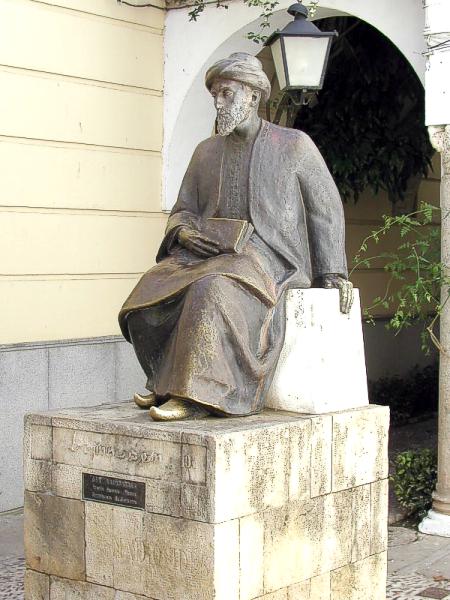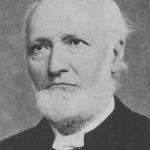
(Wikimedia Commons public domain image)
A week or two ago, somebody — I cannot now recall who it was — challenged me to watch Brigitte Gabriel’s 16.5-minute video Islam: The Undeniable Truth, which offers her summation of the fourteen centuries of Islamic history.
I finally got around, just now, to looking at the first four minutes of her video. (I tired of it, and I have other things to do. But I hope to finish watching it at some later point.) Here is a link to her video:
Here are some of notes that I jotted down regarding that first quarter of her purported historical summary:
I’m not sure that the Prophet Muhammad ever claimed to be the last of the prophets. I assume that she has Qur’an 33:40 in mind, and it’s true that many if not most Muslims interpret it that way. But I’m unconvinced.
Muhammad was only able to recruit his own immediate family and friends in Mecca? Not true. Some of his immediate family didn’t become Muslims. And a number of Meccans other than his friends and family did become Muslims. Including some quite important ones.
Did Muhammad decide to leave Mecca for Medina because of his failure to convert a lot of people in his home town? Not quite. He left Mecca, and took his followers with him, because they were being severely persecuted there, because there was a specific plot in Mecca to kill him, and because the leaders of Medina had invited him to come. Ms. Gabriel has misrepresented this story rather badly.
Was Medina a Jewish center? Well, it had a sizeable Jewish presence. But it was by no means a Jewish town. The Jews were a minority there. Her statement is a bit distorted.
Did Muhammad borrow a lot from the Old Testament in order to make his religion more palatable to the Jews of Medina? Most likely not. Old orientalist scholarship (as represented, for instance, in Rabbi Abraham Geiger’s 1833 book Was hat Mohammed aus dem Judenthume aufgenommen?, sought to demonstrate direct and conscious borrowing on his part, but that was Rabbi Geiger’s general approach to both Islam and Christianity. He argued that neither of them possessed much if any originality, and that they had simply stolen from Judaism. Few take his argument seriously today. Muhammad probably didn’t know the Old Testament at first hand, and likely couldn’t have read it if he had seen it. Moreover, as I’ve pointed out, Medina wasn’t a Jewish city. Ms. Gabriel has exaggerated its Jewishness.
Ms. Gabriel illustrates her contention that Muhammad borrowed wholesale from Judaism by observing that both Jews and Muslims pray “two times a day.” I’m amazed that she would make this basic error, because Muslims famously pray five times a day. And, while we’re at it, Jews have three daily prayer services. Her alleged parallel completely dissolves.
Jews fast on Yom Kippur, says Ms. Gabriel, and Muslims fast during Ramadan. That’s supposed to be further evidence of Muhammad’s borrowing from Judaism. But Yom Kippur (the “Day of Atonement”) is a day – that’s what yom means – while Ramadan is a lunar month. The similarity between monthly Mormon fast days is at least as close to the Jewish practice as is the Muslim practice. And, by the way, Muslims fast from sunrise until sunset for the 29-30 days of the lunar month of Ramadan. They eat at night. The Yom Kippur fast, on the other hand, begins at sundown and continues through the night to the sundown of the following day.
Did Muhammad begin to kill and expel the Jews of Medina simply because they didn’t accept his religion? The treatment of Jews in Medina is one of the most difficult issues in Muhammad’s biography for an observer who seeks to be sympathetic, but Ms. Gabriel fails to mention the political intrigues and wars and the allegations of betrayal and backstabbing that are important to remember in this context.
She also fails to mention the so-called “Constitution of Medina,” which actually includes Jews and Christians within the umma – a term that is now used to refer to the Islamic community, but which, pretty plainly, originally included both Muslims and non-Muslims.
Is Islam, as Ms. Gabriel says, simply “a political movement cloaked in religion”? While there may be somebody somewhere, I’m unaware of any serious scholar of Islam or Islamic history – whether liberal or conservative, Muslim or non-Muslim, theist or atheist — who would agree with her characterization.
Ms. Gabriel’s portrayal of the initiation of the concept of dhimmi and of the payment of the jizya tax is distorted. And her depiction of Christian life under Islam is selective and shows no awareness of historical developments and variations. Nor does she mention the fact that Christians and Jews often held high offices in Islamic states during the pre-modern period (e.g., as royal physicians, officers at court, even prime ministers.)
Christians and Jews were considered “second-class citizens” under Islam, says Ms. Gabriel. This isn’t altogether false. But it’s also not placed in historical context. Jews were considered second-class citizens in the Christian world, as well. (The term ghetto comes from Venice, in Italy, not from Damascus or Cairo or Baghdad. It was, originally, a place to which Jews were essentially restricted.) Jewish history under ostensible Christians is littered with massacres (e.g. the Russian pogroms) and with such events as their expulsion from Spain after the Reconquista–to say nothing of the Dreyfus trial and, ultimately, the Nazi Holocaust. When the Crusaders took Jerusalem, they massacred not merely Muslims but Jews, as well. And such attitudes persisted for many centuries, showing up even in such works as Shakespeare’s The Merchant of Venice and Sir Walter Scott’s novel Ivanhoe and the musical Fiddler on the Roof. I wonder if Ms. Gabriel will mention such items as the fact that, when Ferdinand and Isabella expelled the Jews from Spain in 1492 and thereafter, Sultan Mehmet the Conqueror invited those refugees to come to Istanbul, and that many of them did. (I rather doubt that she will.) And Muslims didn’t even rank as second-class citizens under Christian rule. (Ferdinand and Isabella expelled them from Spain as well, offering them as an alternative only forced conversion.)
Thus far, candidly, I’m not favorably impressed.
But she still has slightly more than twelve minutes to go. Maybe things will get better.












